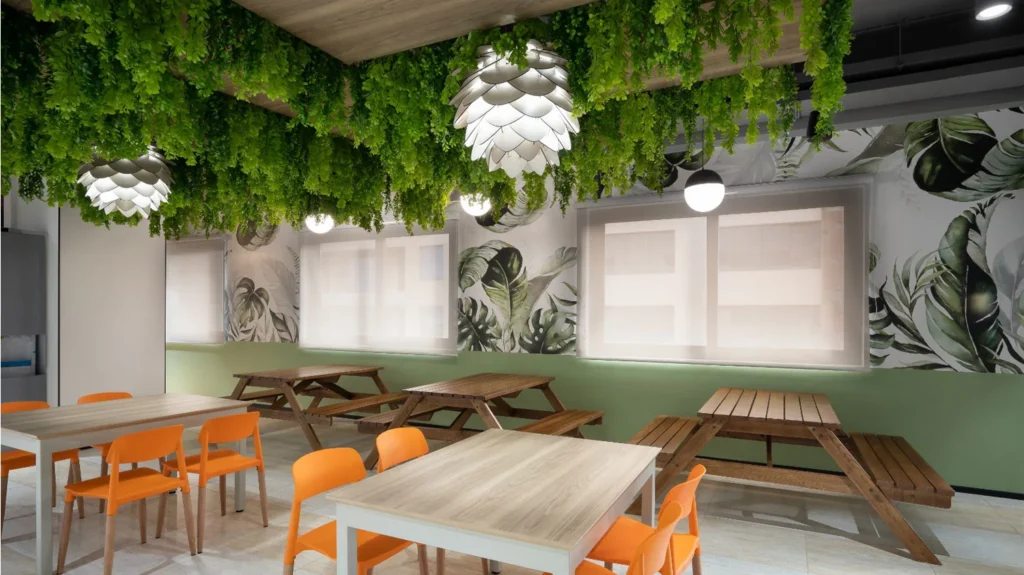No. In fact, a workspace can be well-lit using sustainable lighting and smart designs.
Have you ever wondered about energy efficient lighting that’s eco-friendly but also lights up your workspace well? Yes, it is possible. When we step into the world of sustainable lighting office design, we can understand how LED light fixtures, smart lighting energy savings controls, daylight harvesting systems, and lighting retrofits can brighten your day at work.
Imagine efficient lighting that’s both kind to the planet and your eyes. Thus, think of this blog as a secret recipe for a well-lit, eco-conscious office space.
So, what is energy-efficient lighting? Is it only about using natural light? Or maximizing the output of light?
The answer is NO.
Sustainable lighting talks about longevity, durability, lower carbon emissions, non-toxic materials, adaptation of smart technologies, and integration with design & nature. It is also about human-centric lighting productivity and enhancing employee well-being. Sustainable lighting is about:
- User comfort
- Quality of illumination
- Environmental impact
- Task lighting sustainable design principles
- Compliance with regulations and standards
- Reducing reliance on artificial lighting during the daytime
Thus, sustainable or energy-efficient lighting is a comprehensive approach. It aims to include fixtures that simulate natural light, reduce eye strain, and support better health. Further, the versatility of energy-efficient lighting solutions for commercial spaces allows workplaces to adapt lighting for various activities, user preferences, and moods.
1. LED Lighting Workspaces
Is LED lighting effective workspace lighting? Absolutely. LED bulbs are the best example of efficient lighting as they consume less energy compared to traditional bulbs. In addition, LEDs come with a longer lifespan too. They provide adjustable and bright light without compromising on quality of illumination.
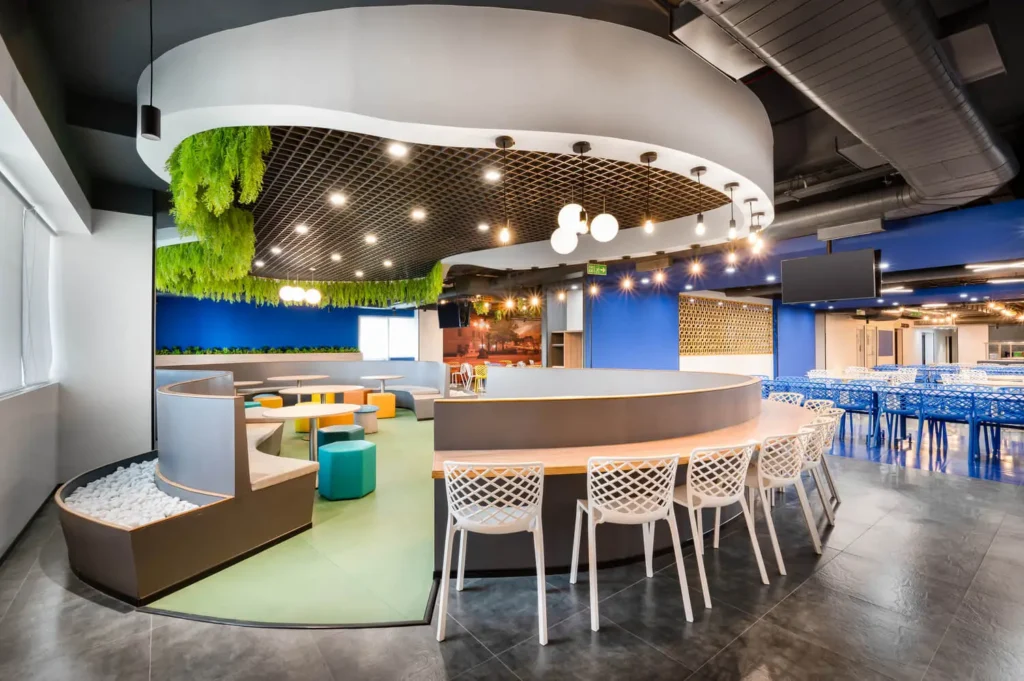
2. Daylight Harvesting System (DHS)
Daylight harvesting means strategically planning the input of natural light within your workspace. For instance, designing workspaces with ample access to natural light reduces the need for artificial lighting during daylight hours. Light shelves, windows, and skylights can efficiently brighten spaces while supporting circadian lighting sustainable design principles.
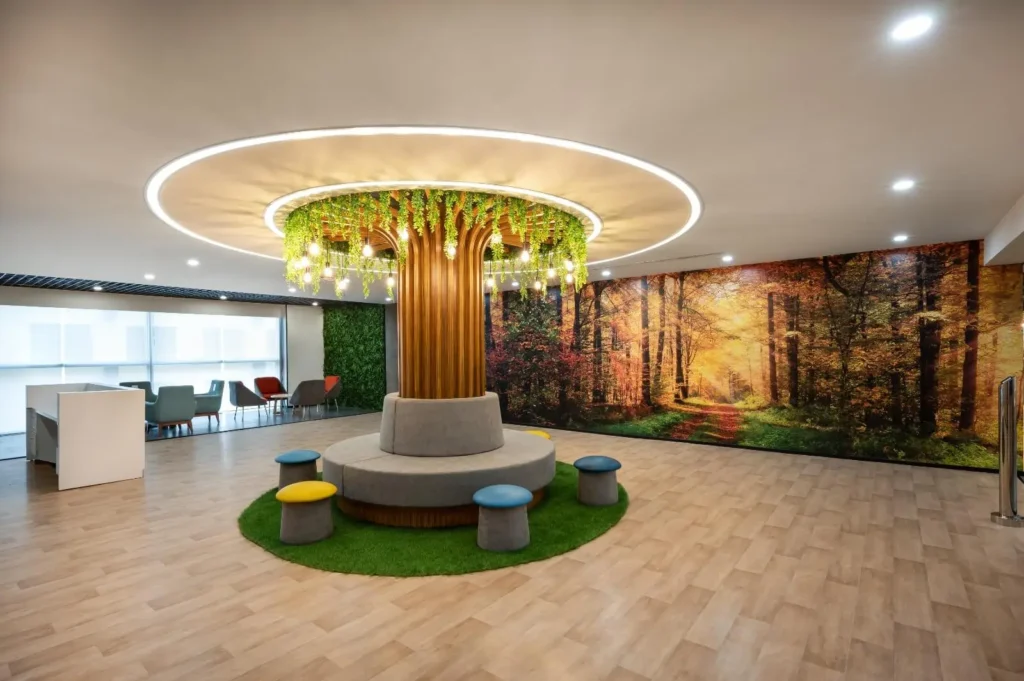
3. Smart Lighting Controls
Installing lighting control systems such as timers and sensors that adapt lighting to natural light and occupancy can work wonders for sustainability. These controls curtail unnecessary energy consumption by ensuring lights are active only when required.
A complete Smart Light Management System encompasses occupancy-based activation, daylight harvesting, and zone-specific controls, all monitored through a centralized dashboard. This balance of natural and artificial light ensures both comfort and smart lighting energy savings.
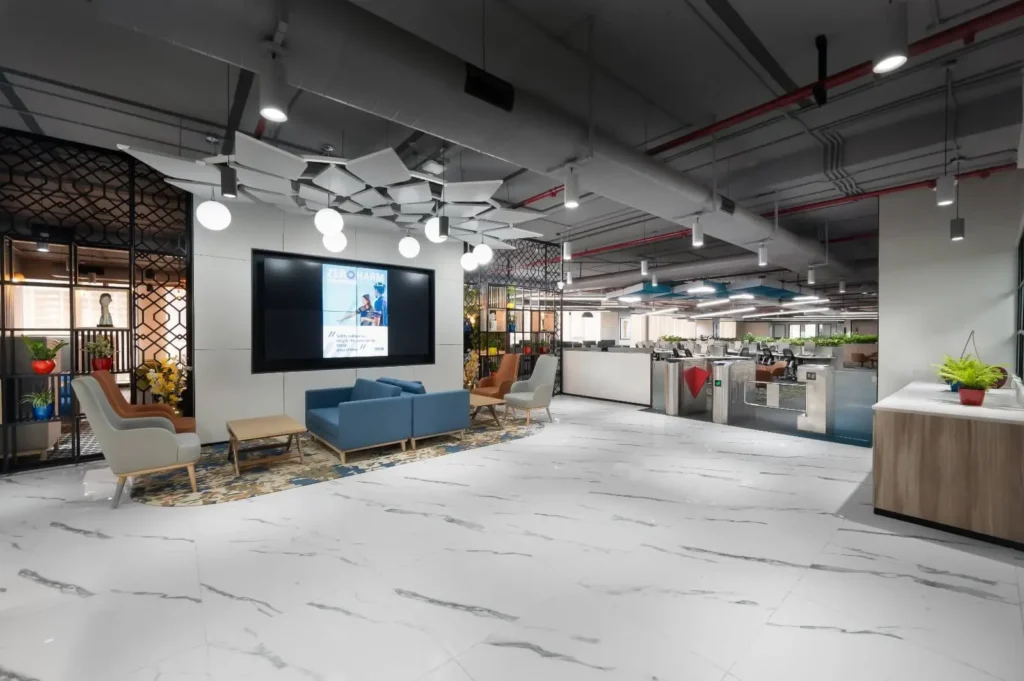
4. Lighting Management System (LMS) through BMS
Picture a lighting design system that controls all the office lights intelligently. It’s like having a switchboard that knows when and where to turn the lights on or off. This smart approach saves energy and makes sustainable lighting office design practical for modern workplaces.
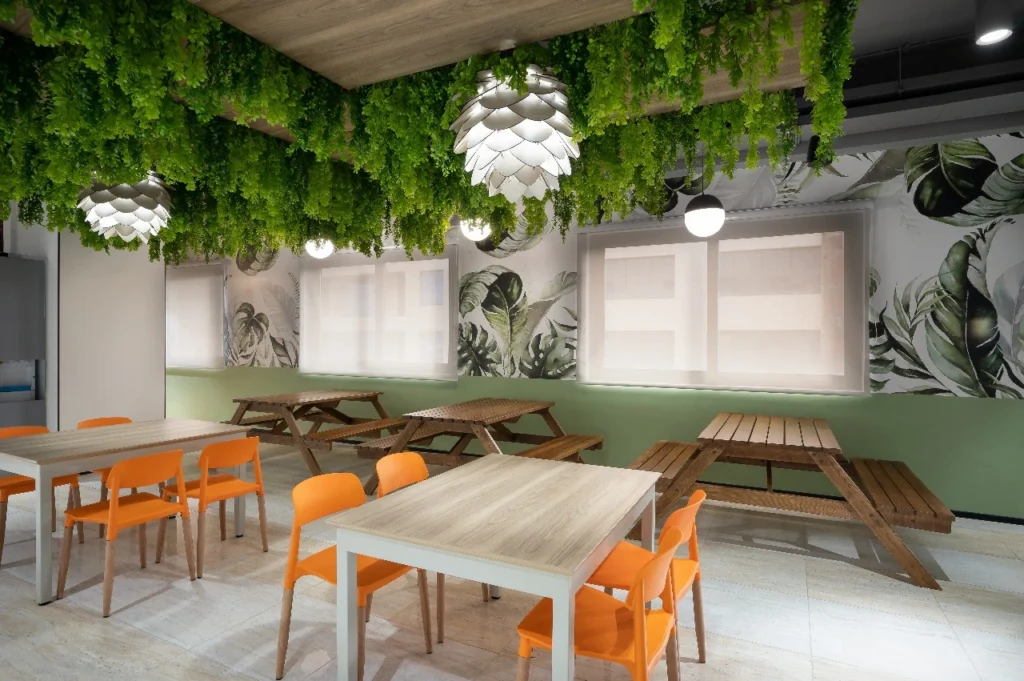
5. Emergency Lighting Systems
Emergency lighting acts as a safety shield for your workplace, ensuring illumination during blackouts or emergencies. Beyond safety, newer designs also incorporate solar-powered lighting elements to align with sustainable lighting principles while complying with safety standards.
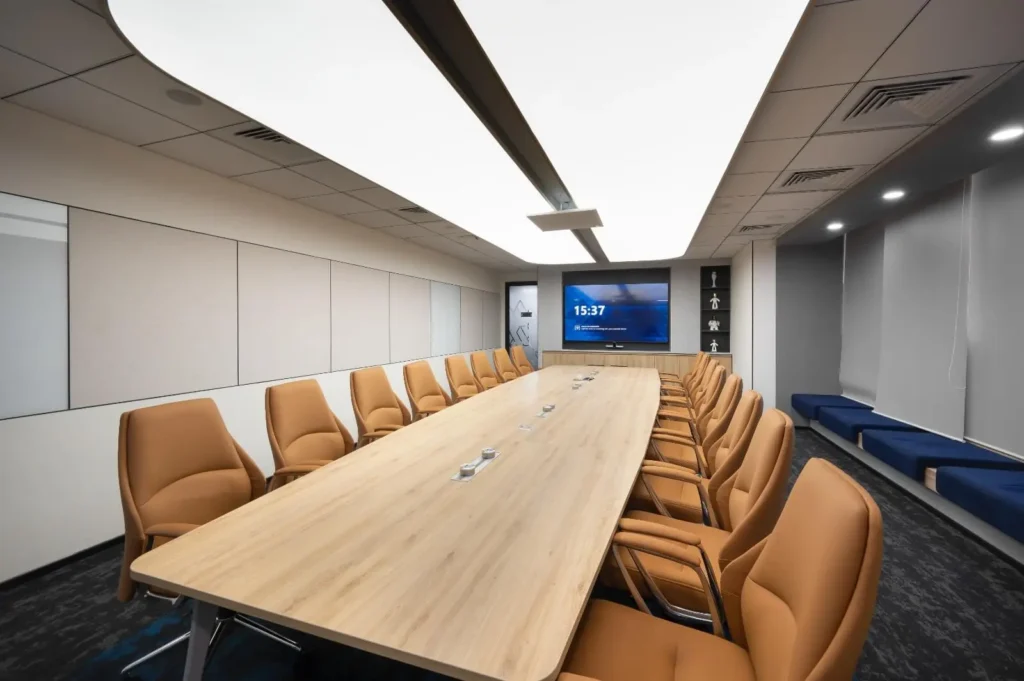
In a world embracing sustainability, these strategies stand as a beacon of responsibility and innovation. From saving energy to making spaces eco-friendly and bright, adaptation of sustainable lighting goes a long way. Using lights that last longer, consume less power, and apply lifecycle analysis sustainable lighting methods ensures durability and reduced carbon impact.
Ultimately, the combination of LEDs, daylight harvesting, task lighting sustainable design, circadian lighting sustainable design, and lighting control systems offers energy-efficient lighting solutions for commercial spaces—a true balance of functionality, sustainability, and human comfort.

